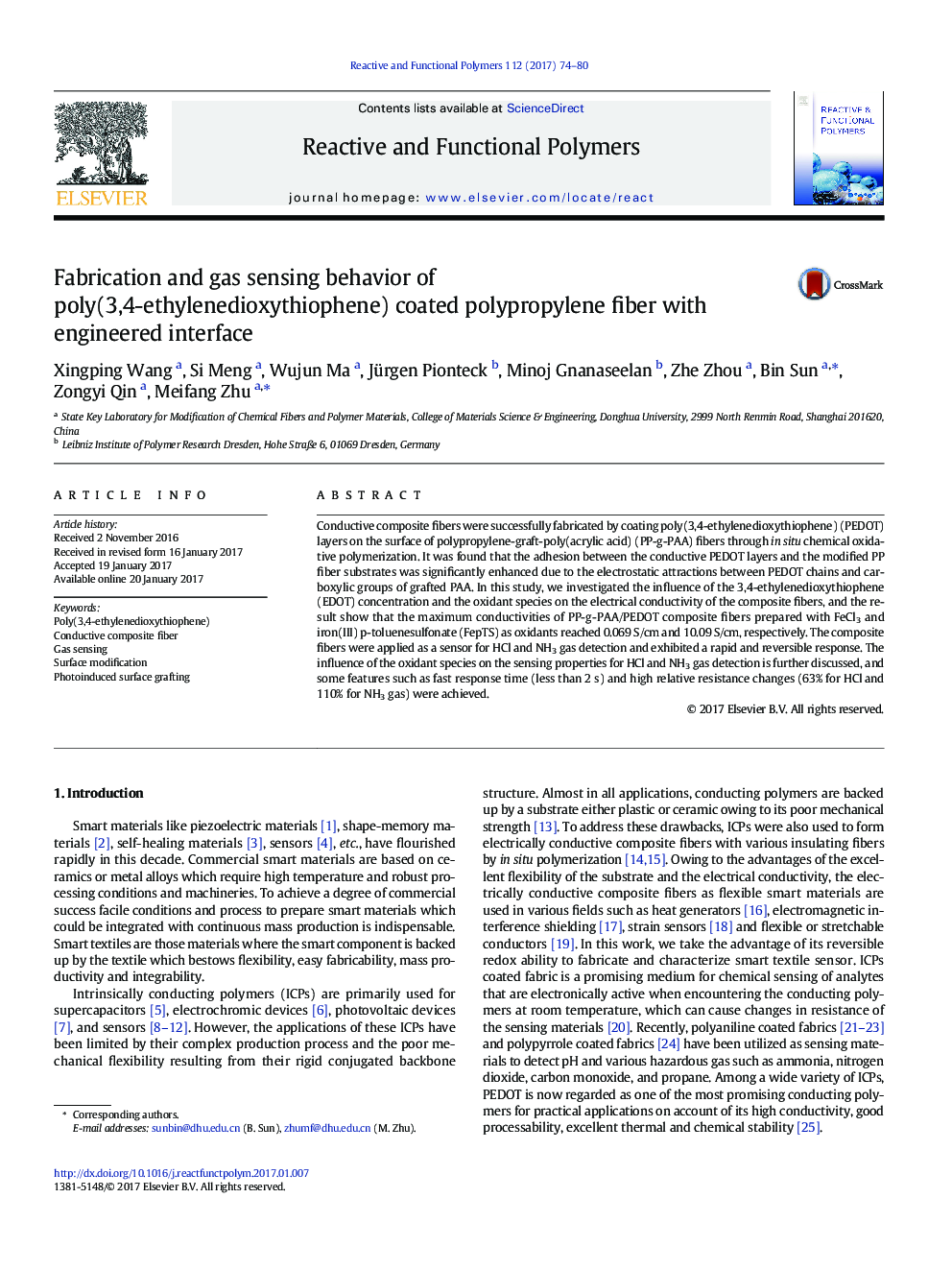| Article ID | Journal | Published Year | Pages | File Type |
|---|---|---|---|---|
| 5209368 | Reactive and Functional Polymers | 2017 | 7 Pages |
â¢The conductive composite fibers were fabricated via in situ polymerization of EDOT on functionalized PP fibers.â¢The grafted PAA on PP fibers enhanced the adhesion of PEDOT with the PP substrate.â¢The conductive composite fibers exhibited high reversibility and sensitivity in response to HCl and NH3 gas.
Conductive composite fibers were successfully fabricated by coating poly(3,4-ethylenedioxythiophene) (PEDOT) layers on the surface of polypropylene-graft-poly(acrylic acid) (PP-g-PAA) fibers through in situ chemical oxidative polymerization. It was found that the adhesion between the conductive PEDOT layers and the modified PP fiber substrates was significantly enhanced due to the electrostatic attractions between PEDOT chains and carboxylic groups of grafted PAA. In this study, we investigated the influence of the 3,4-ethylenedioxythiophene (EDOT) concentration and the oxidant species on the electrical conductivity of the composite fibers, and the result show that the maximum conductivities of PP-g-PAA/PEDOT composite fibers prepared with FeCl3 and iron(III) p-toluenesulfonate (FepTS) as oxidants reached 0.069Â S/cm and 10.09Â S/cm, respectively. The composite fibers were applied as a sensor for HCl and NH3 gas detection and exhibited a rapid and reversible response. The influence of the oxidant species on the sensing properties for HCl and NH3 gas detection is further discussed, and some features such as fast response time (less than 2Â s) and high relative resistance changes (63% for HCl and 110% for NH3 gas) were achieved.
